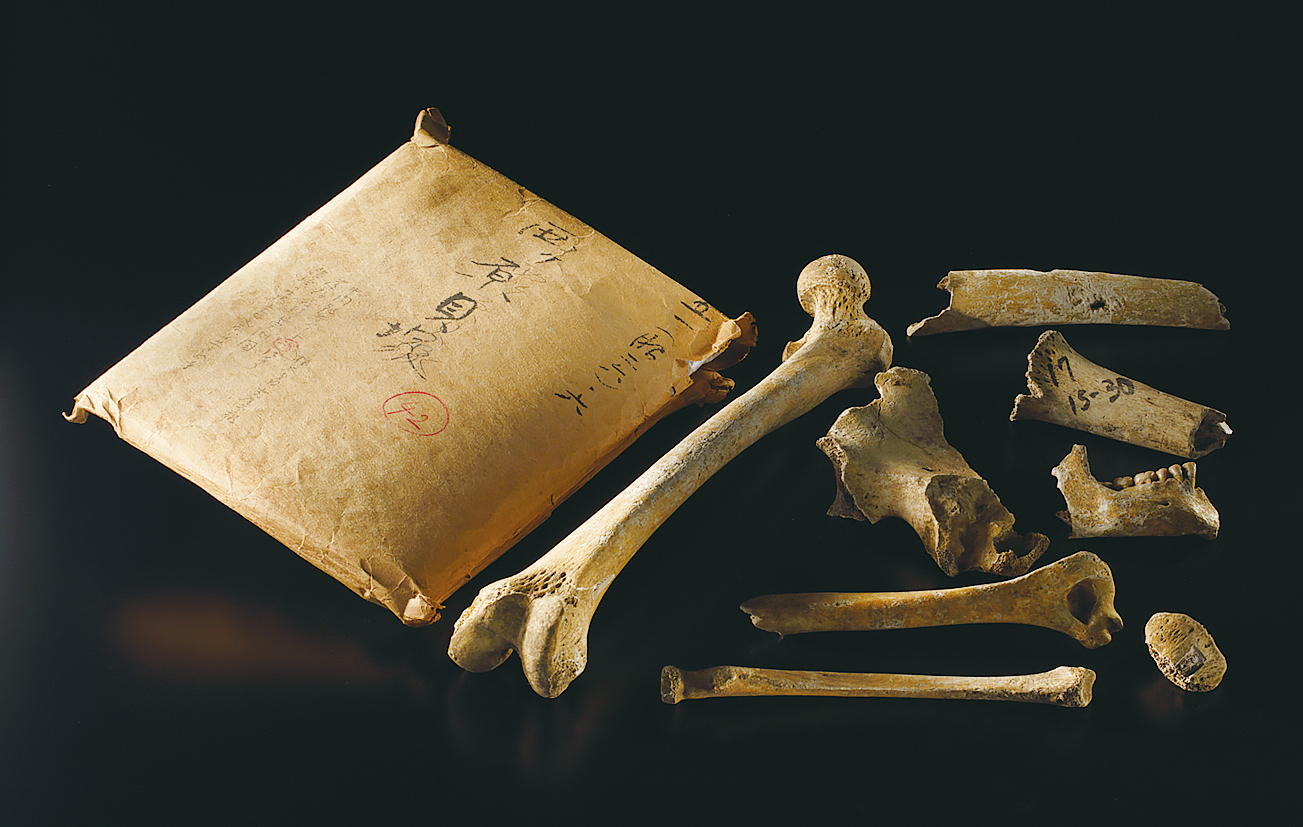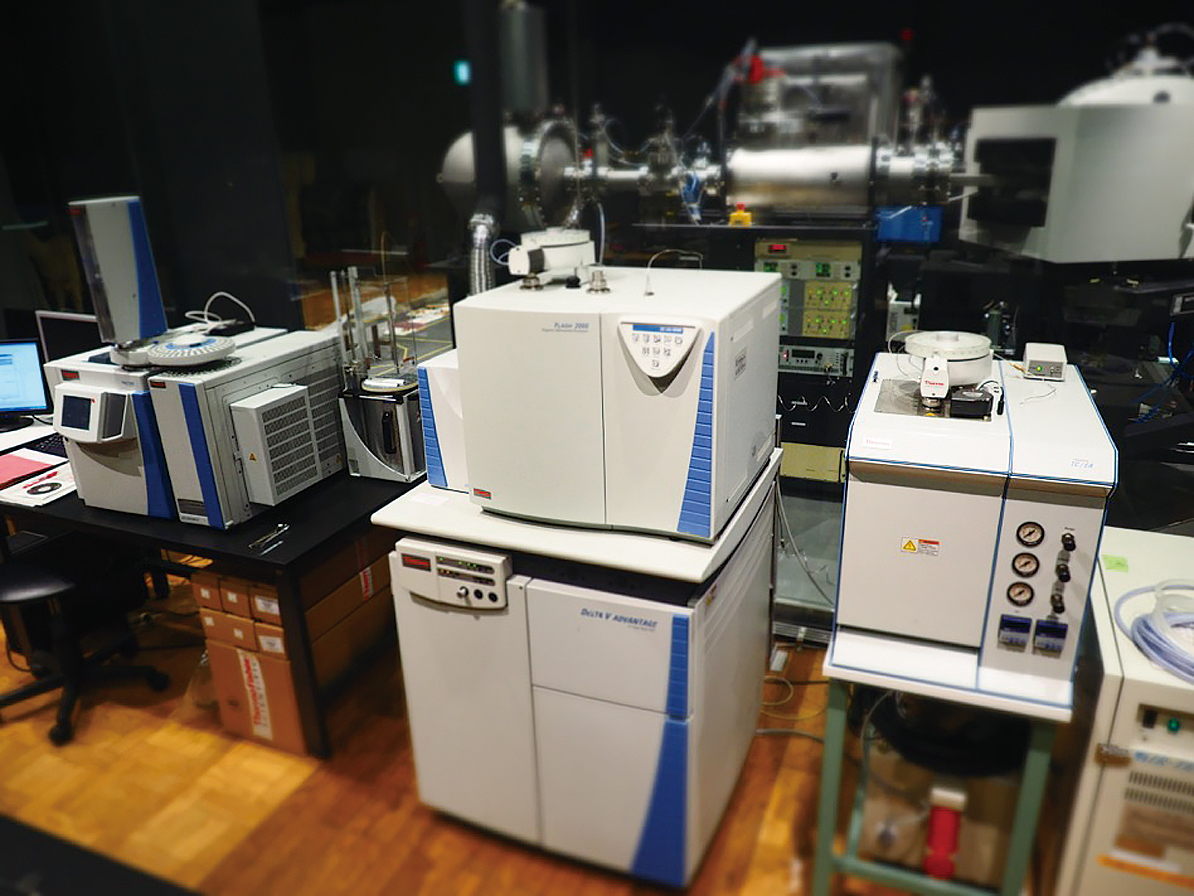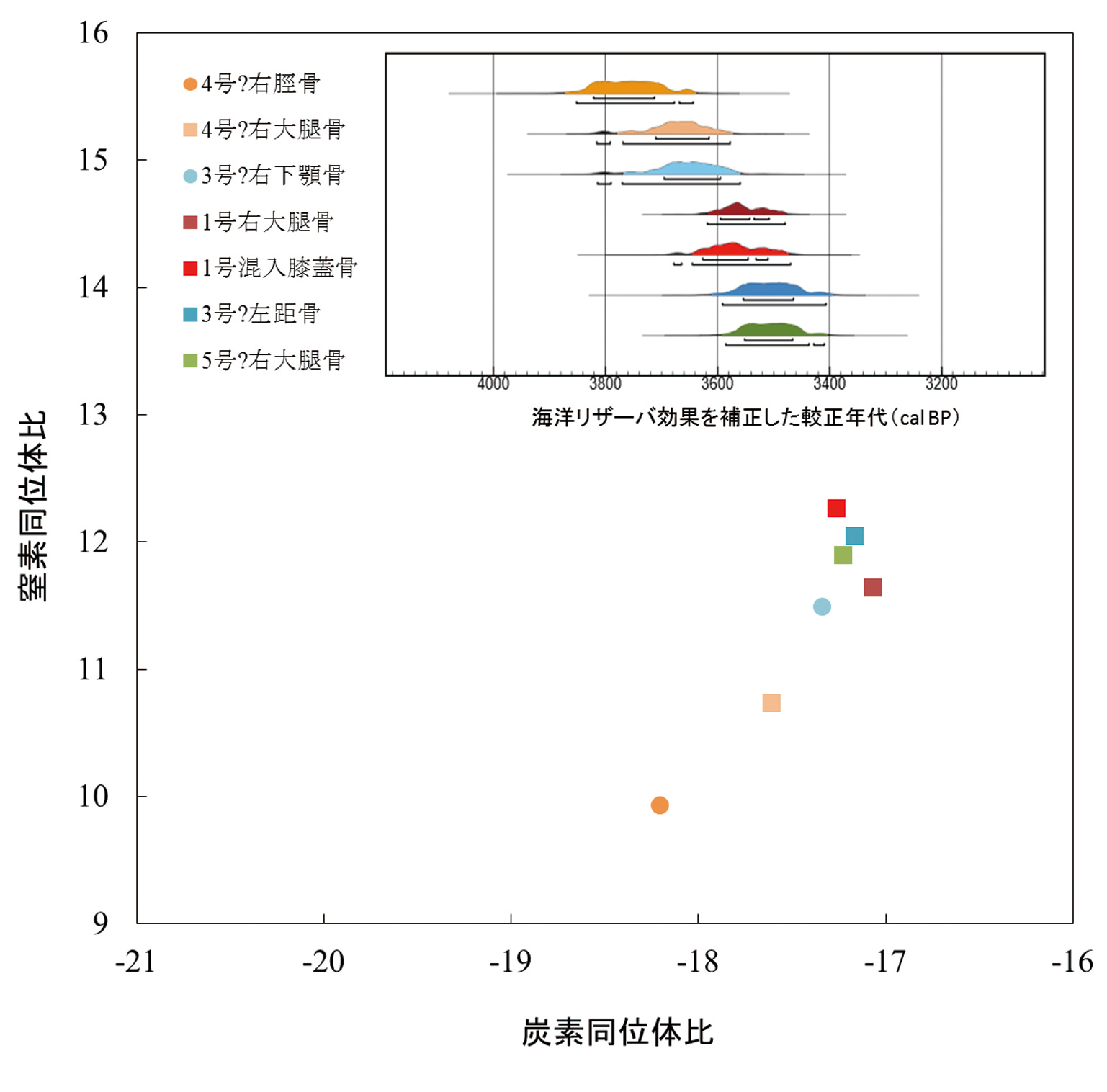H5
Dating Jomon human skeletons
We are in a part of the global carbon cycle in past and today and the radiocarbon dating can clearly shows its effect on the Jomon skeletons. Here, we show a case study of collaboration including anthropological morphology and chronological science for the Jomon skeletons from Nishigahara shellmidden, Kita-ku, Tokyo, 4 km northwest of the Hongo campus of the University of Tokyo.
In the 2007 rescue survey, a fetus human bones were recovered from a Shomoji type pottery, assigned to the period between 4420-4250 cal BP. The apparent 14C age of bone are 4568-4440 cal BP corresponding to precedent pottery type, Kasori E4 dated to 4520-4520 cal BP. This discrepancy was caused by 14C-depleted carbon from marine ecosystem, because Jomon people consumed significant amount of see foods.
We correct the marine reservoir effect on human bones by measuring stable carbon and nitrogen, suggesting 34% contribution from marine and the corrected calibrated 14C age is 4412-4296 cal BP in a good agreement with pottery chronology. The correction based on stable isotopes worked very well, because the stable carbon and nitrogen isotopes reflect the origin of elements in isotope signature.
Then, we measured seven bones originated from Nishigahara shellmidden, excaveted in 1951 but the detailed archaeological information has been lost. According to morphology we selected the samples and conducted the chemical fingerprinting to detect individual variability. As a result, we conclude the boxes contain at least 6 individuals corresponding to Kasori B type pottery. This research will reveal the daily life and the temporal change of diet at the Nishigahara site. (Minoru Yoneda & Aiko Saso)
References
Yoshida, K. et al. (2010) Pre-bomb marine reservoir ages in the Western Pacific. Radiocarbon 52: 1197-1206.



